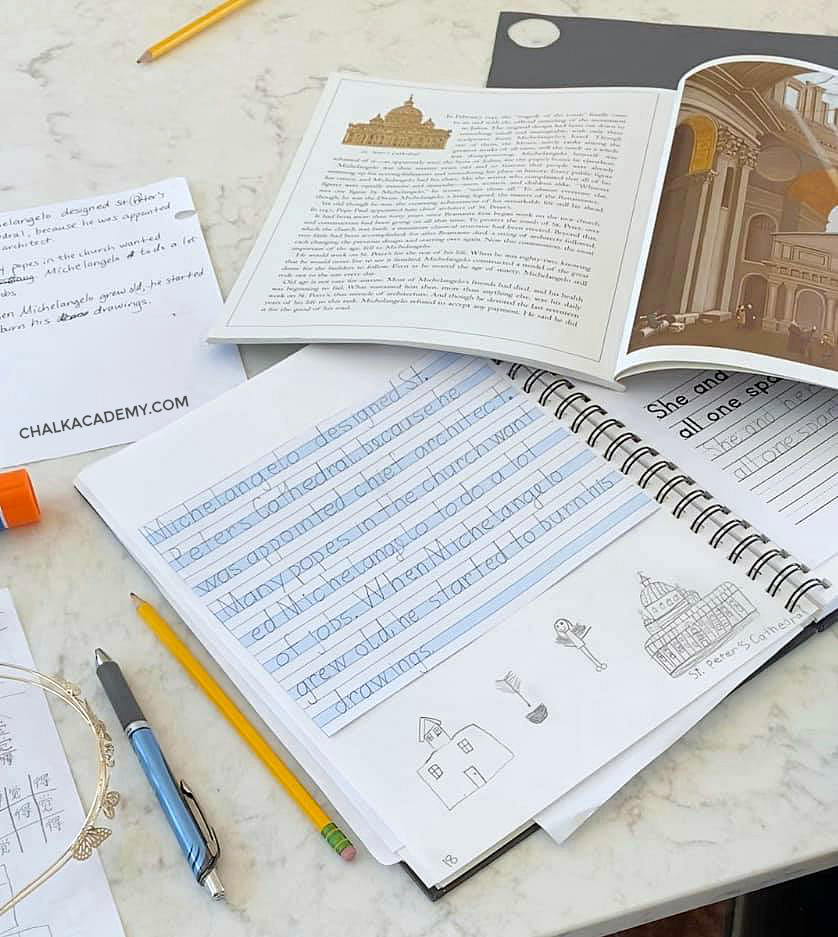How to Teach Kids Grammar Naturally

Since we’re raising bilingual children, parents often ask how we teach our kids grammar in English and Chinese. Teaching grammar to children can be challenging, but it doesn’t have to be tedious.
Parents often worry about which English and Chinese learning apps, grammar worksheets, and workbooks to use.
Instead, parents and educators can help children develop strong grammar skills naturally at home and in the classroom.
Grammar can be an enjoyable part of the daily routine, whether it is a native or second language for your child. Here are five research-based methods for teaching grammar to kids.
What is grammar? A simple explanation for kids

Grammar is like the rulebook for how we talk and write. Just like how we follow the rules when we play games, we also follow the rules in our language to ensure everyone understands what we’re saying.
When grammar rules are not followed, communication and understanding can be challenging.
Grammar rules help us put words in the right order and use them correctly. Every language has a system for parts of speech and subject, verb, adverb, and adjective order. Some languages have words with tenses (past versus present); others have masculine and feminine pronouns.
Try this: 7 Natural Ways to Improve Communication Through Play
Best ways to teach kids grammar
Teaching grammar to children naturally is about fostering a love for language, communication, and self-expression.
The methods outlined here—conversation, reading, and copywork —allow children to learn grammar rules through immersion.
1. The power of conversation
Research shows that conversation is crucial for building and supporting language skills, including grammar. Through conversations with native language speakers, children intuitively and subconsciously learn grammar by listening.
Since play is an important part of childhood, talking to kids about play becomes a prime opportunity for rich language exchange. For bilingual families, playful child-led dialogue is the best way to encourage children to speak the minority language.
As children grow and become familiar with the language, kids start to notice when language sounds “right” or “wrong”. When they hear non-native speakers make grammatical errors, the mistakes often stand out. This is because grammar patterns evolve into a familiar melody in the mind.
Try this: 20 Ways to Get Your Kids to Speak Chinese
2. Reinforcement through recasting
Recasting is a powerful yet subtle strategy for teaching kids correct grammar.
- Example in English: When your child says, “Me want cookie,” gently recast it as “I want a cookie.”
- Example in Chinese: When your child says “我吃了二个苹果 / 我吃了二個蘋果 (Wǒ chīle èr gè píngguǒ), gently recast it as “我吃了两个苹果 / 我吃了兩個蘋果 (Wǒ chīle liǎng gè píngguǒ / I ate two apples).”
This recasting technique involves rephrasing a child’s sentence correctly while maintaining the flow of the conversation. Over time, children will notice grammar rules through these interactions.
A word of caution: try not to overcorrect. Dissecting each mistake and interrupting every train of thought can destroy a child’s confidence.
Also, remember that native speakers make grammar mistakes, too. After all, we’re all human. That’s okay!
Conversation is a wonderful way to demonstrate humility in your grammar mixups. You’re never too old to learn.
Related: How I’m Learning Chinese as a Busy Parent
3. Grammar gold in books
Reading is an invaluable resource for teaching grammar naturally to kids. Through books, children are exposed to diverse sentence structures. Stories teach children vocabulary and verb tenses that might not be used in daily conversation.
While reading, take a moment to discuss the characters and grammar used in the book. Ask open-ended questions like “How does the author describe the character’s actions?”
If open-ended questions are too challenging for the child, try close-ended questions like “Why do you think the author used the word ‘fast’ here?” These discussions encourage a child to notice nuances in language. They help a child see the connection between words, grammar, and storytelling.
Related: Why Books Are the Best Gifts for Bilingual Kids
4. Audiobook opportunities
These days, modern children are lucky to have so many amazing story podcasts and audiobooks. Audiobooks are especially beneficial to bilingual children who lack exposure to the minority language.
Through audiobooks, children can learn grammar by listening to pacing, pronunciation, and intonation from various native language speakers.
For example, the Habbi Habbi reading pen series is a kid-friendly way to learn new languages, including Mandarin Chinese, Spanish, Korean, Hindi, Spanish, and French.
Explore this: Luka Reading Robot is a Game Changer for Bilingual Families
5. Grammar patterns in copywork

Copywork is an age-old technique that involves copying sentences or paragraphs from books and other written works.
This method, championed by educator Charlotte Mason, emphasizes that children learn grammar and writing skills through imitation.
When children are ready to write English, Chinese characters, or other languages, invite them to copy excerpts from favorite books onto paper.
Regular copywork practice can help young learners and older students understand the basics of grammar. Over time, copywork familiarizes children with proper sentence structure, grammar rules, and punctuation like commas, periods, and question marks.
Related: 5 Fun Sentence Building Activities with a Word Train
Teach kids grammar anywhere
Learning grammar can be a natural and enjoyable process that doesn’t require formal lessons or worksheets. Grammar lessons can occur at the beach, playground, and in the comfort of your own home.
With conversations, books, and copywork, children can develop strong grammar skills while having fun. Remember that grammar is a natural part of everyday language; children can absorb basic grammar patterns organically.
Recommended: Fun Ways to Boost Literacy with Handmade Cards
What is your favorite way to teach kids grammar?
Please share your thoughts in the comments below. We’d love to learn from your experience!

